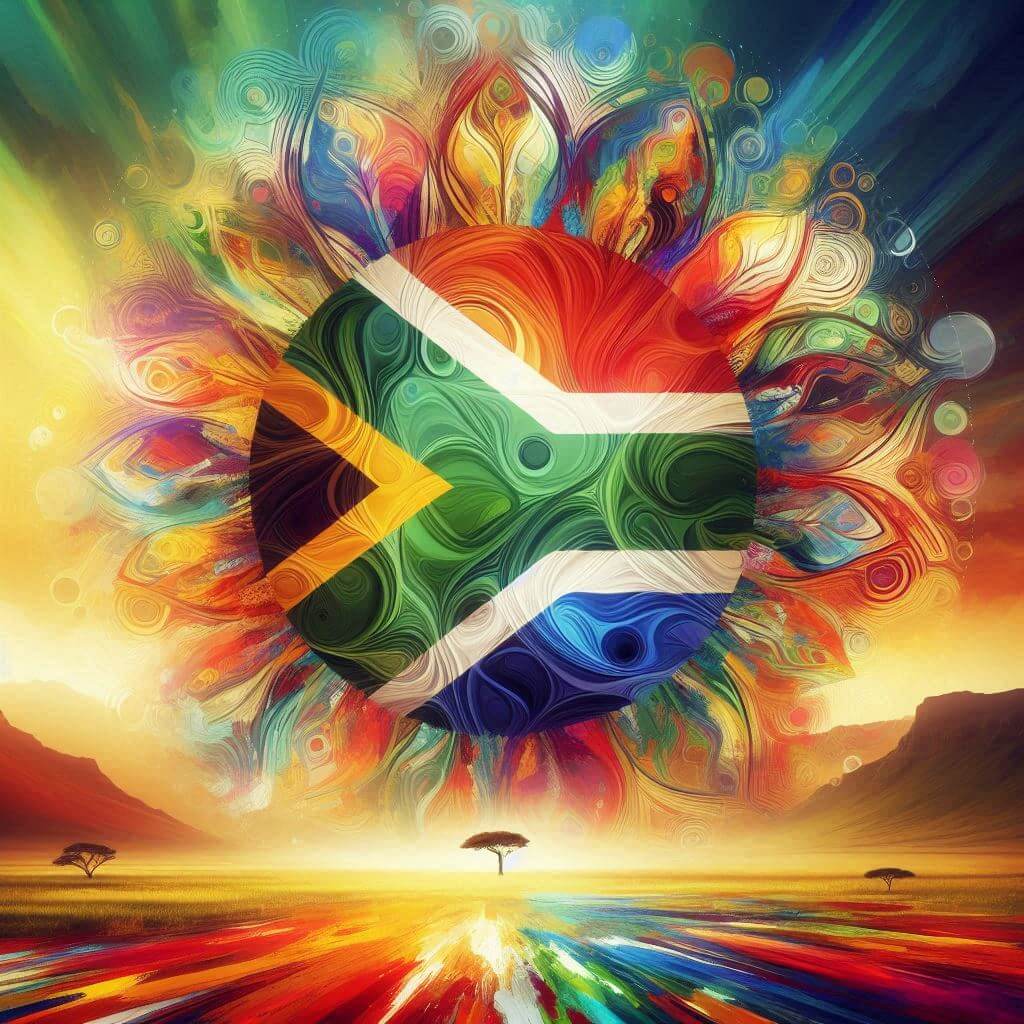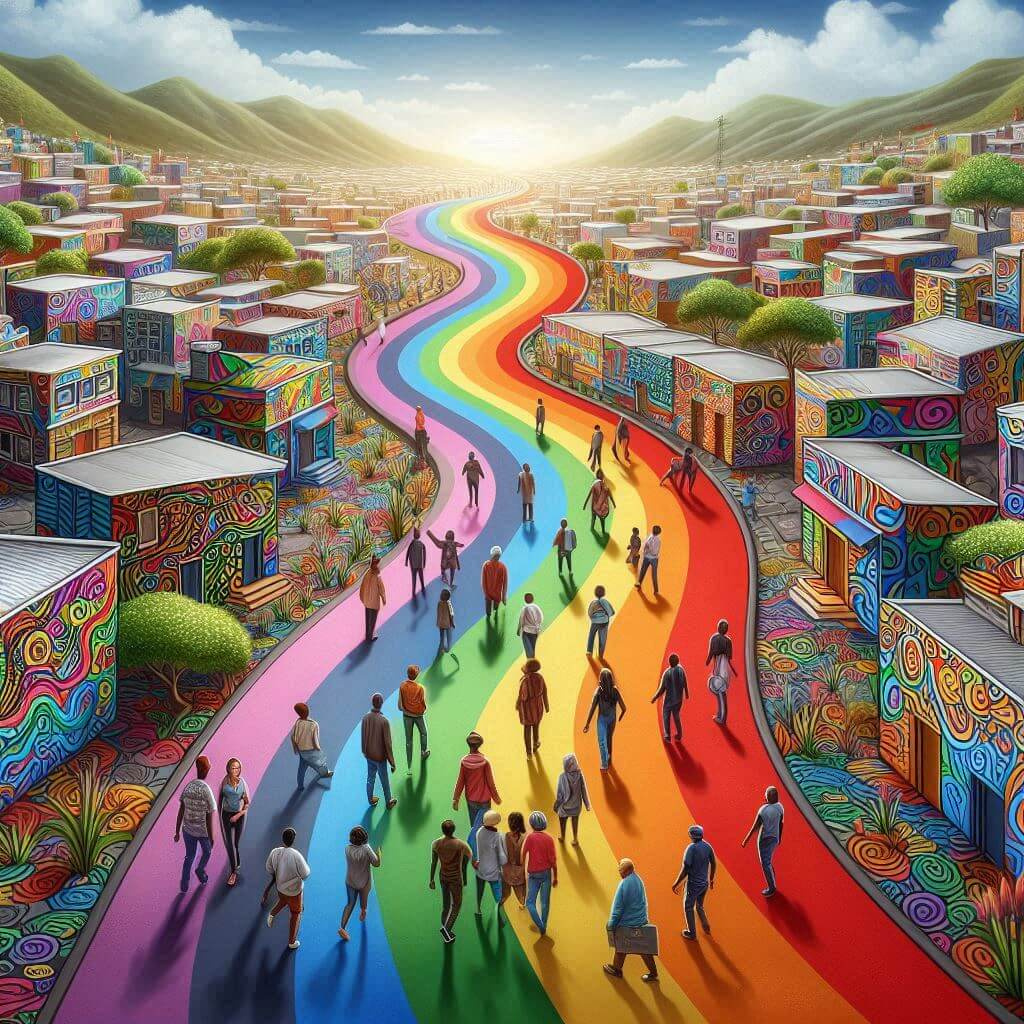The flag of South Africa, known as the Rainbow Flag, consists of a Y-shaped band dividing the flag into a red and blue panel on top, a green panel on the bottom, with black, yellow, and white stripes. This vibrant and complex design symbolizes the diversity and unity of the South African nation.
South Africa information
| National Flag Day | April 27 |
| Sovereign state | Yes |
| Official name | Republic of South Africa |
| Capital | Pretoria (administrative), Cape Town (legislative), Bloemfontein (judicial) |
| Population | 58,200,000 |
| Area | 1,221,037 km² |
| Currency | South African rand (ZAR) |
| Language | Afrikaans, English, isiNdebele, isiXhosa, isiZulu, Sepedi, Sesotho, Setswana, siSwati, Tshivenda, Xitsonga |
| Continent | Africa |
| Region | Southern Africa |
| Subregion | — |
| Borders | Namibia, Botswana, Zimbabwe, Mozambique, Eswatini, Lesotho |
| Timezone | South African Standard Time (SAST) UTC+2 |
| Calling code | +27 |
| Top-level domain | .za |
History of the South African Flag
 The current South African flag was adopted on April 27, 1994, the day of the first democratic elections following the end of apartheid. It was originally intended as an interim flag but was so well-received that it became the permanent national flag. The design was created by Frederick Brownell, the State Herald of South Africa at the time.
The current South African flag was adopted on April 27, 1994, the day of the first democratic elections following the end of apartheid. It was originally intended as an interim flag but was so well-received that it became the permanent national flag. The design was created by Frederick Brownell, the State Herald of South Africa at the time.
Symbolism and Design of the South African Flag
The South African flag's design is rich in symbolism:
- The Y-shape symbolizes the convergence of diverse elements within South African society, coming together into a unified path forward.
- The red, white, and blue colors were taken from the Dutch and British flags, representing South Africa's colonial history.
- The green, black, and yellow colors were inspired by the flag of the African National Congress (ANC), representing the country's indigenous people and struggle for freedom.
- The black triangle symbolizes the African people, the yellow represents natural resources, and the green represents the fertility of the land.
- The white in the flag represents peace and harmony between all racial groups in South Africa.
Usage and Significance of the South African Flag
 The South African flag is a powerful symbol of national unity and reconciliation. It is prominently displayed on government buildings, schools, and during national celebrations such as Freedom Day on April 27. The flag represents South Africa in international forums and sporting events, symbolizing the country's diverse heritage and its commitment to democracy and equality.
The South African flag is a powerful symbol of national unity and reconciliation. It is prominently displayed on government buildings, schools, and during national celebrations such as Freedom Day on April 27. The flag represents South Africa in international forums and sporting events, symbolizing the country's diverse heritage and its commitment to democracy and equality.
Interesting Facts About the South African Flag
- The South African flag is one of the world's newest national flags and the only one to have six colors as part of its primary design.
- The flag is sometimes referred to as the Rainbow Flag, reflecting South Africa's nickname as the Rainbow Nation, a term coined by Archbishop Desmond Tutu to describe post-apartheid South Africa.
- The flag's design was finalized just a week before it was officially adopted, making it one of the fastest flag adoptions in history.
- Unlike many national flags, the South African flag has no official symbolism attached to its individual colors, allowing for open interpretation and inclusivity.